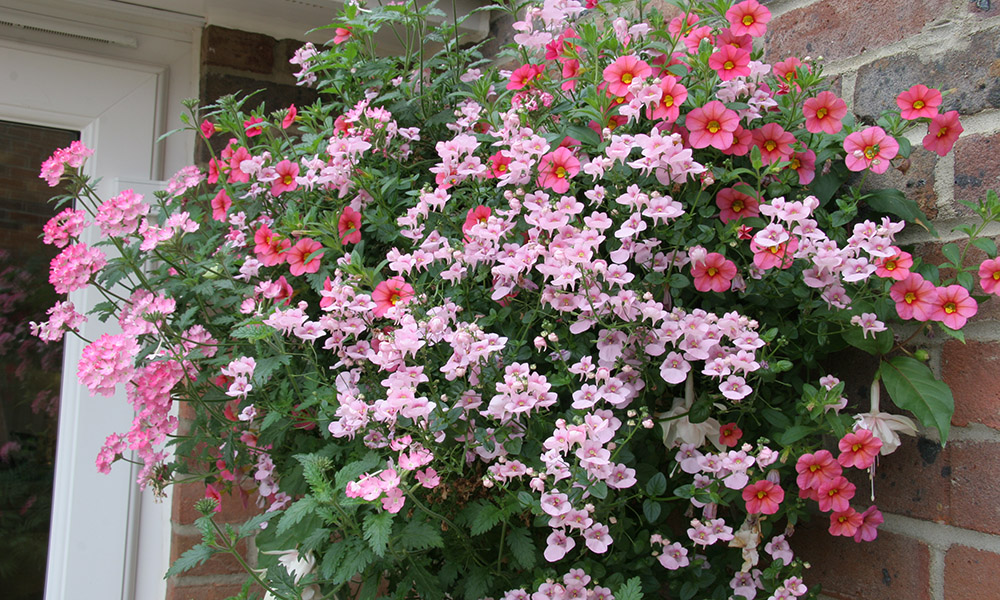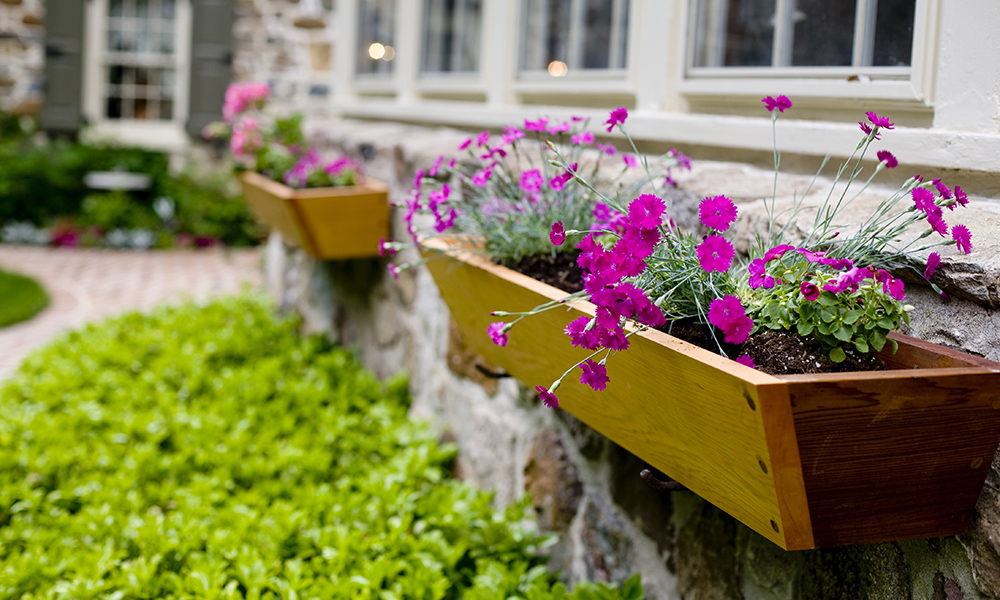Hanging Around: How hanging baskets and window boxes can bring your garden alive
Hanging baskets and window boxes can bring your garden alive with colour. Kevin Revell shows you how to create and maintain them
Hanging baskets have become a universal currency in our gardens. Those with small flats or no garden at all can usually put one or two by a door or find room for at least one window box. Those with large gardens can find numerous places to site them – on walls, fences, sheds and around seating areas.
These baskets of joy bring a smile to the faces of visitors, improve the visual amenity of the area and are often employed as a tactic to encourage potential house buyers, brightening up a house that has been on the market too long.
The arrival of the hanging basket plants in garden centres in April is treated with the same level of fevered excitement as hearing the first cuckoo of spring; invariably too early, wise gardeners wait until the reliably warm weather of May before planting. Some people just can’t wait, but provided they are given protection at night in a greenhouse or porch, they usually get away with it. They also steal a march on the neighbours who are left scrabbling around in crowded garden centres, for the greater diversity and availability of plants is found early in the season. Of course, some people can’t be bothered with all the fuss and they buy a hanging basket kit which contains all the plants necessary to plant a basket in a pre-ordained range of pastel or hot shades. Pre-planted baskets are also readily available but most keen gardeners engage in the annual ritual of planting their own.
Hanging baskets come in all shapes and sizes but the pre-lined woven rattan or willow baskets now seem to have taken over from the rather fiddly wire baskets which require lining with moss, the advantage being that it is possible to plant many trailing plants under the basket rather than just spilling over the sides. On the downside, nesting birds will frequently make off with the moss and invariably more is needed than stated on the packet. Artificial liners made from coir or recycled wool may prove easier to use but are less easy on the eye. Pre-formed papier-mâché lines are thankfully largely banished these days. Large wrought iron manger-style baskets are perhaps the preserve of pubs and restaurants and will require some industrial strength fixings for the average house. When filling the basket, don’t skimp on the compost – this is the engine room of the basket and will keep the basket going right through the summer. Multi-purpose compost alone will not be up to the task. Either add additional slow-release fertiliser and wetting gel or buy a specific hanging basket and container compost formulated for this task.
When it comes to planting, there are no rules – it is entirely up to you as to which plants in what colours are used, but tradition dictates that there should be a taller plant in the middle to give a bit of height to the arrangement. Three or five smaller or trailing plants are then arranged around this and if possible, trailing plants are inserted around the basket sides and base to give an all-encompassing show of foliage and flowers. Ideally, no trace of the basket or liner should be visible once the plants are established. Usually it will be a fuchsia or geranium giving height, and trailing forms of fuchsias and geraniums are a popular choice for the rest of the basket. Baskets planted with single varieties of these plants can make a spectacular long-lasting display but a mixture of other plants will add to the interest. Trailing lobelias are the best plants for inserting in the sides of the basket as they cascade down to a great length and are available in a range of shades from white, pink, pale blue and dark blue.

Trailing petunias or surfinias are another popular choice coming in many bright colours, including outrageous shades of hot pink and hot red. These plants are extremely vigorous and three to five plants will be more than enough to fill a basket with colour long into the summer. The trumpet-shaped flowers blast out the message that summer is here – enjoy it while it lasts! Double forms have become popular recently but both types will need regular dead-heading to keep them looking good. They have now been superceded by mini petunias or million bells which have masses of tiny flowers in many hot bright or cool pastel colours. Other useful contenders include the tiny white stars of bacopa, fragrant nemesia, colourful verbena and the cool, contrasting foliage of nepeta and helichrysum. All these smaller flowering plants require little in the way of ongoing maintenance.
Having planted the basket, give it a good water and feel the weight – this will enable you to judge whether it needs watering in the future. A lightweight basket is on the verge of collapse. Keeping the display looking good is not easy, particularly if the baskets are exposed to too much wind or sun. They will need watering on hot days and perhaps twice a day but always try to water in the cool of the evening or early morning to avoid scorching the plants.
The compost used in the basket will be good enough to get the plants growing but once established, they will need regular feeding once or twice a week to keep the display looking good. The volume of compost for the plants to root into is relatively small and great demands are made of it once the flowering display is in full swing. If the display starts to look a bit ragged in mid-summer, don’t despair – a hard trim and a good feed will have it back in good fettle long into the autumn.
Of course, a hanging basket or window box doesn’t need to be full of flowers if these are not your thing. It is a very good way of growing herbs and salad vegetables which can still look attractive and will be out of the way of marauding slugs and snails. In hot positions, a display of garden succulents will be a low maintenance alternative for those with less time on their hands and they make a very stylish, on-trend display while bees would certainly appreciate a window box full of flowering lavender or thyme.

